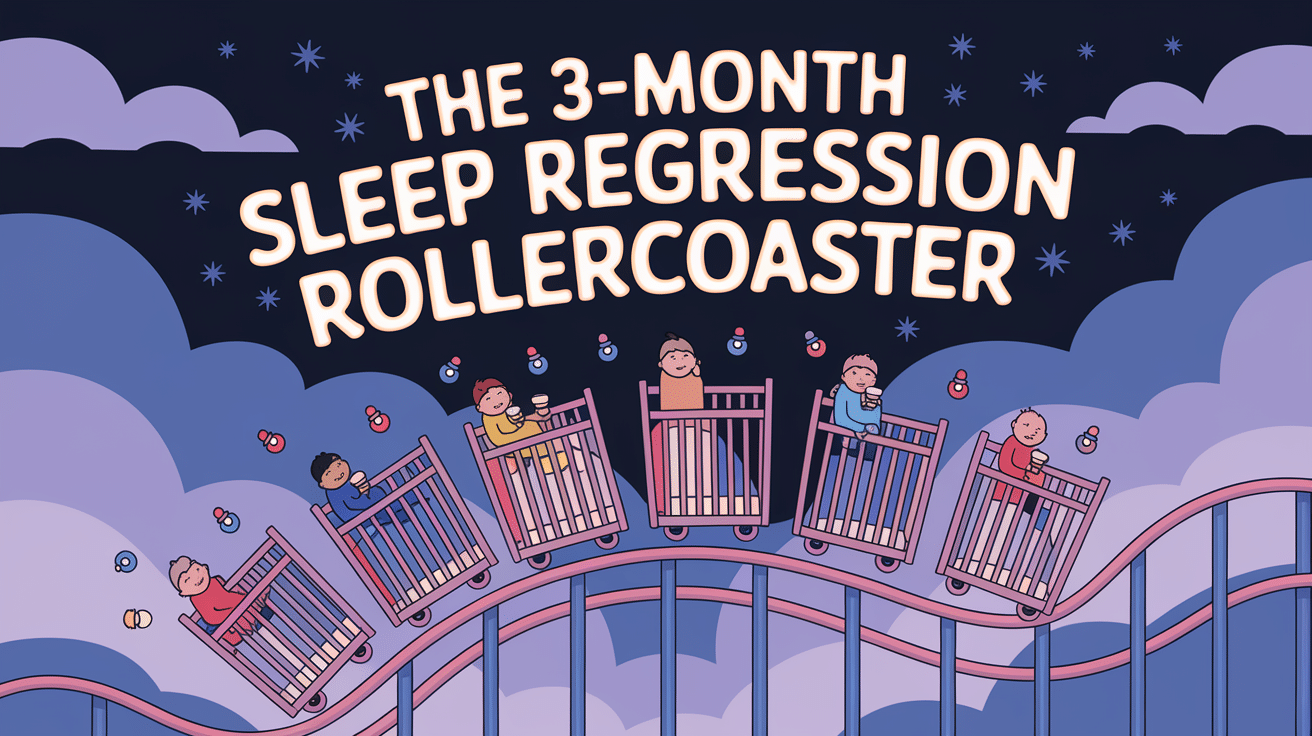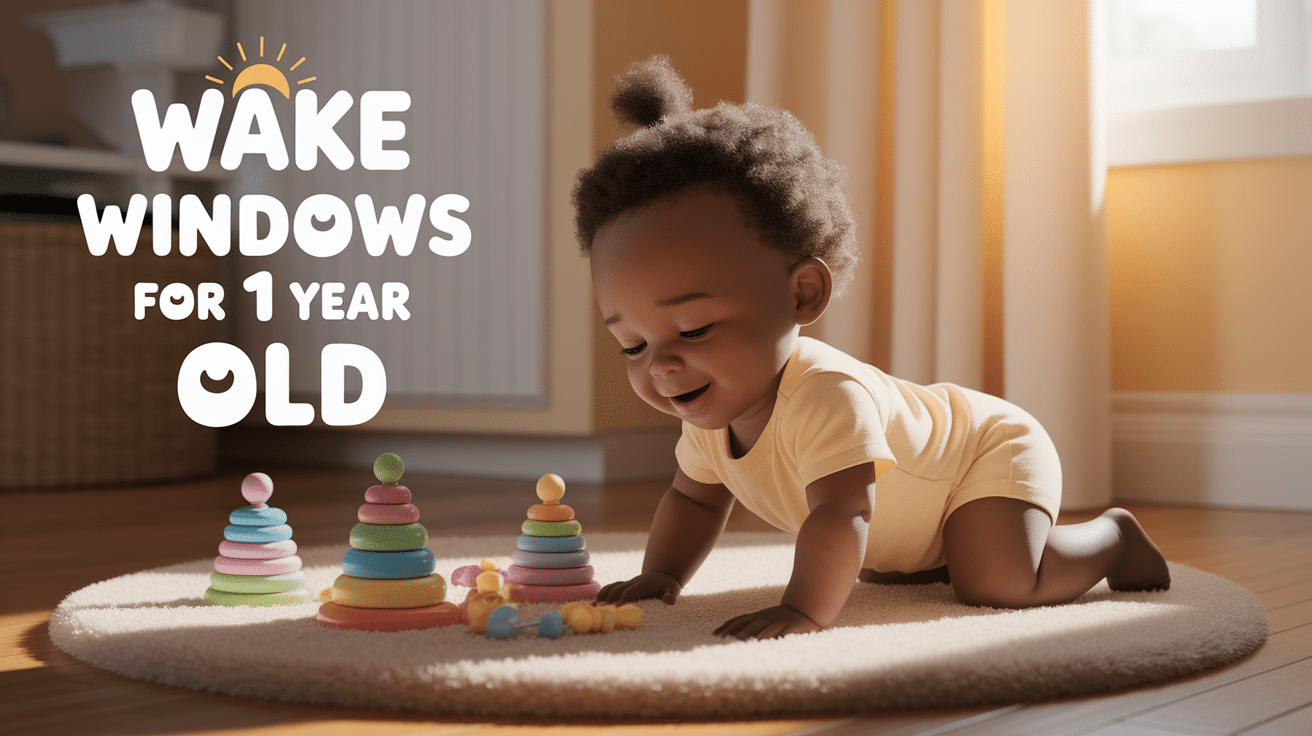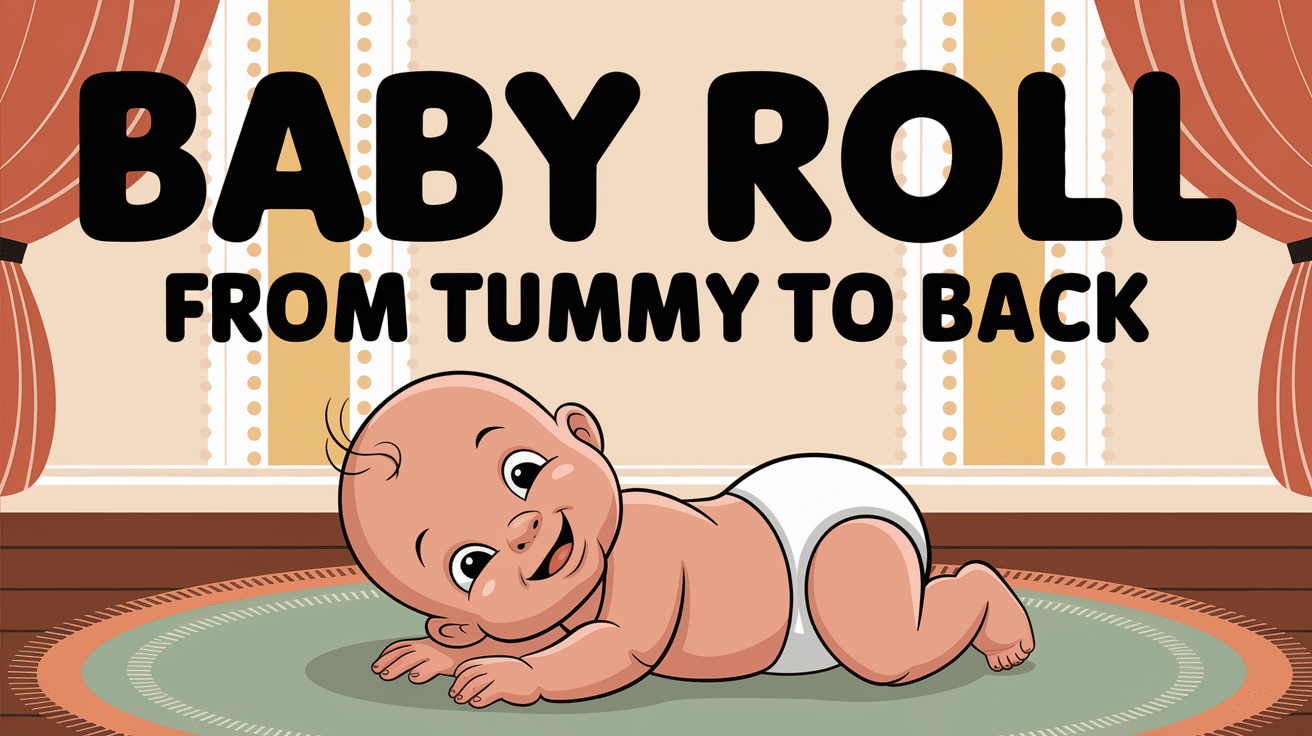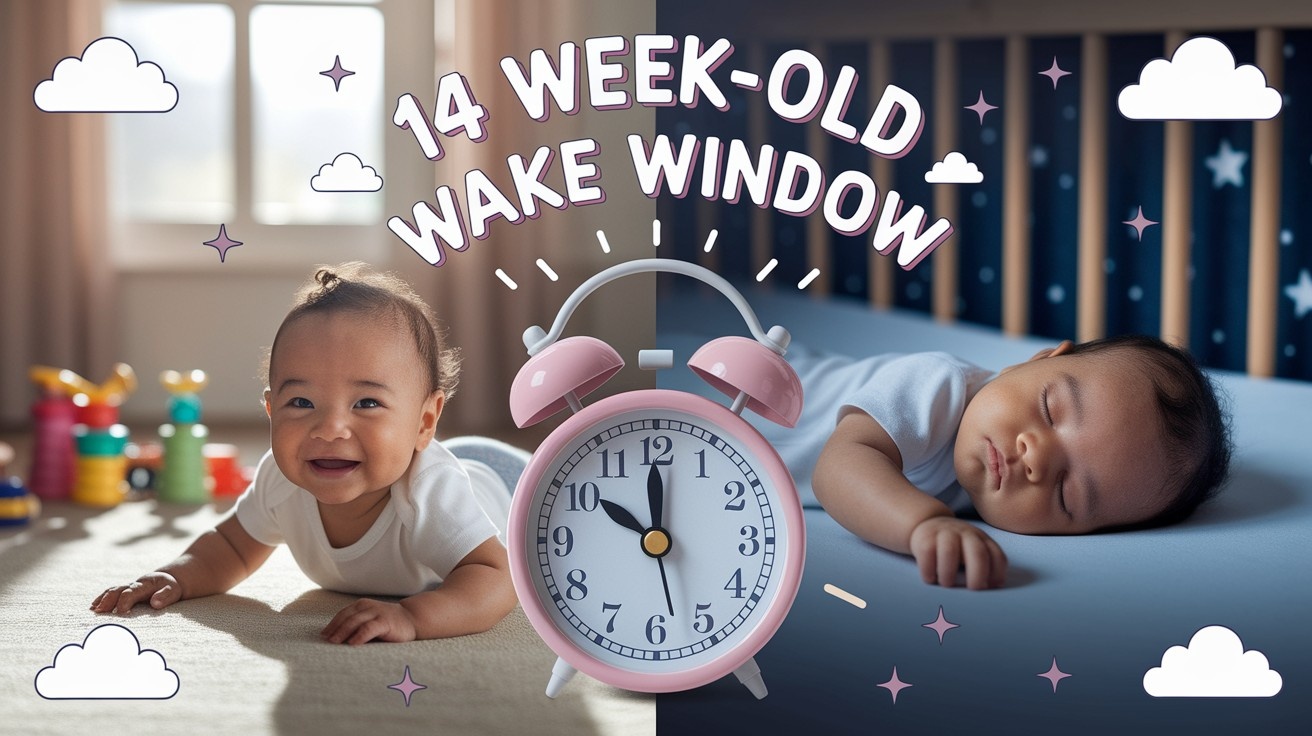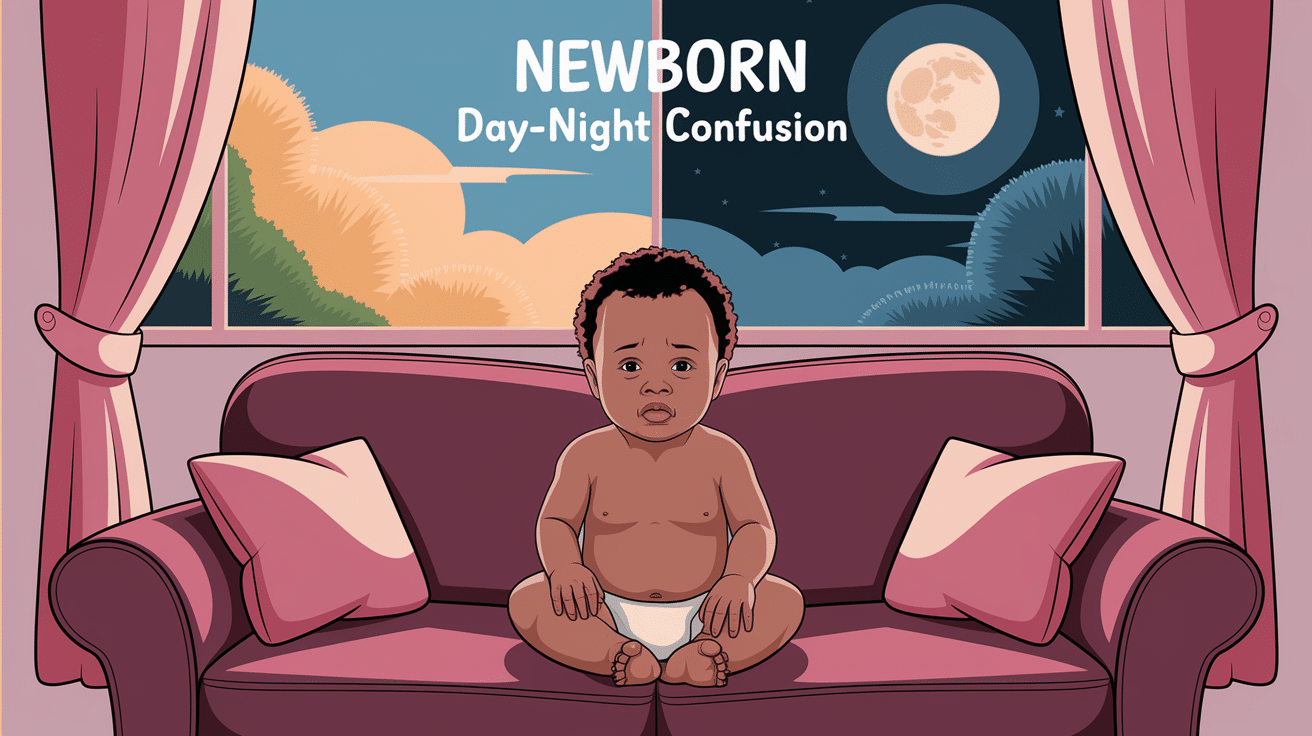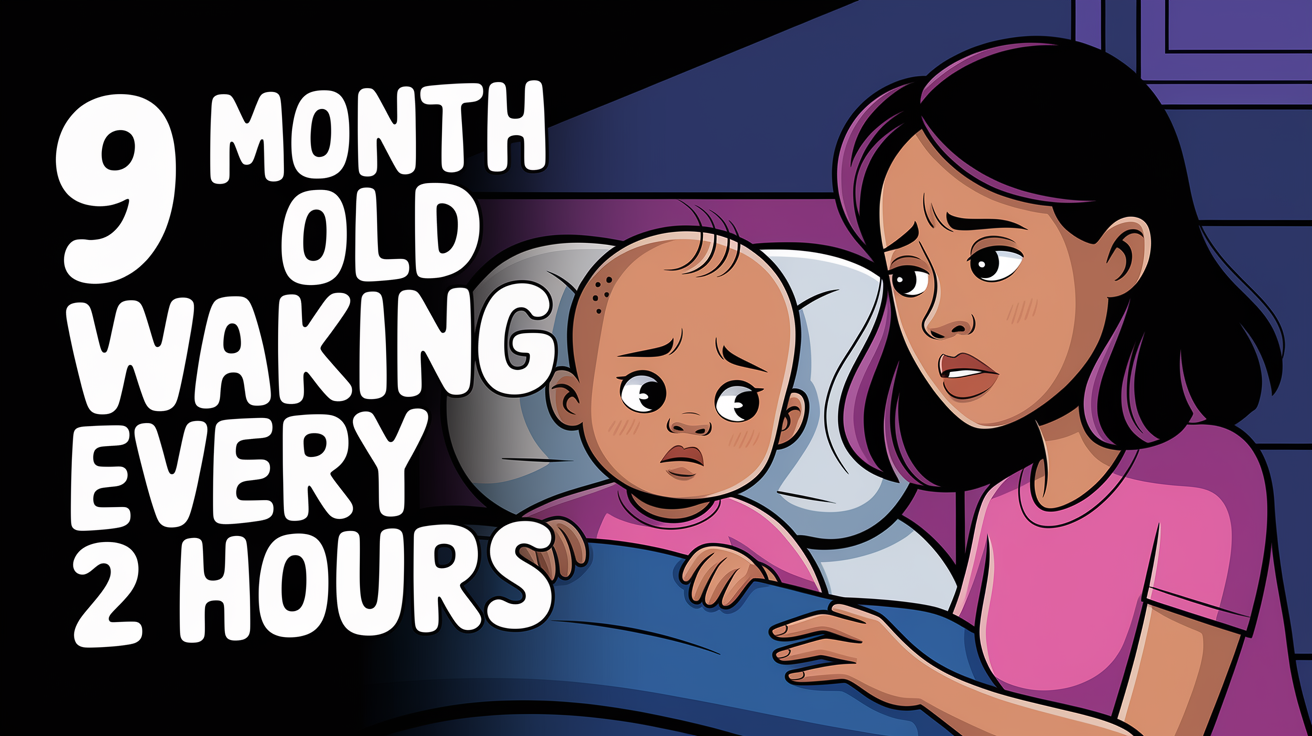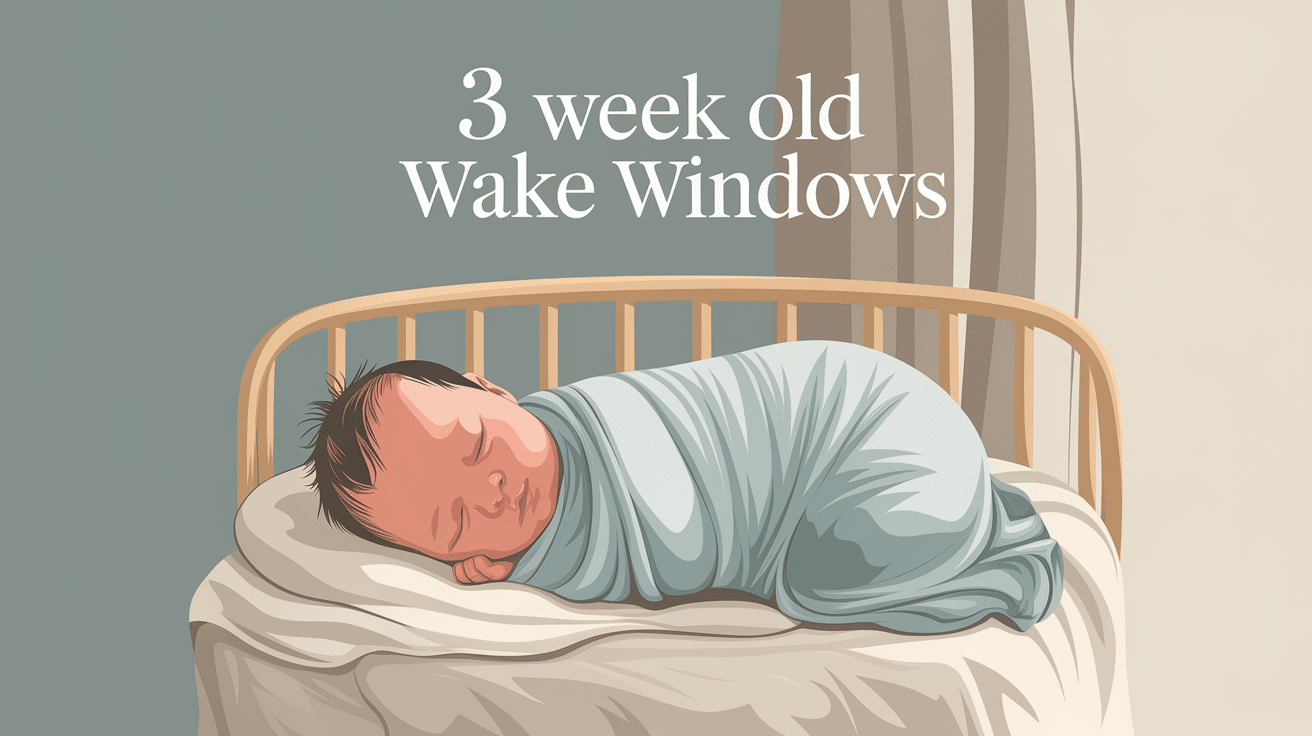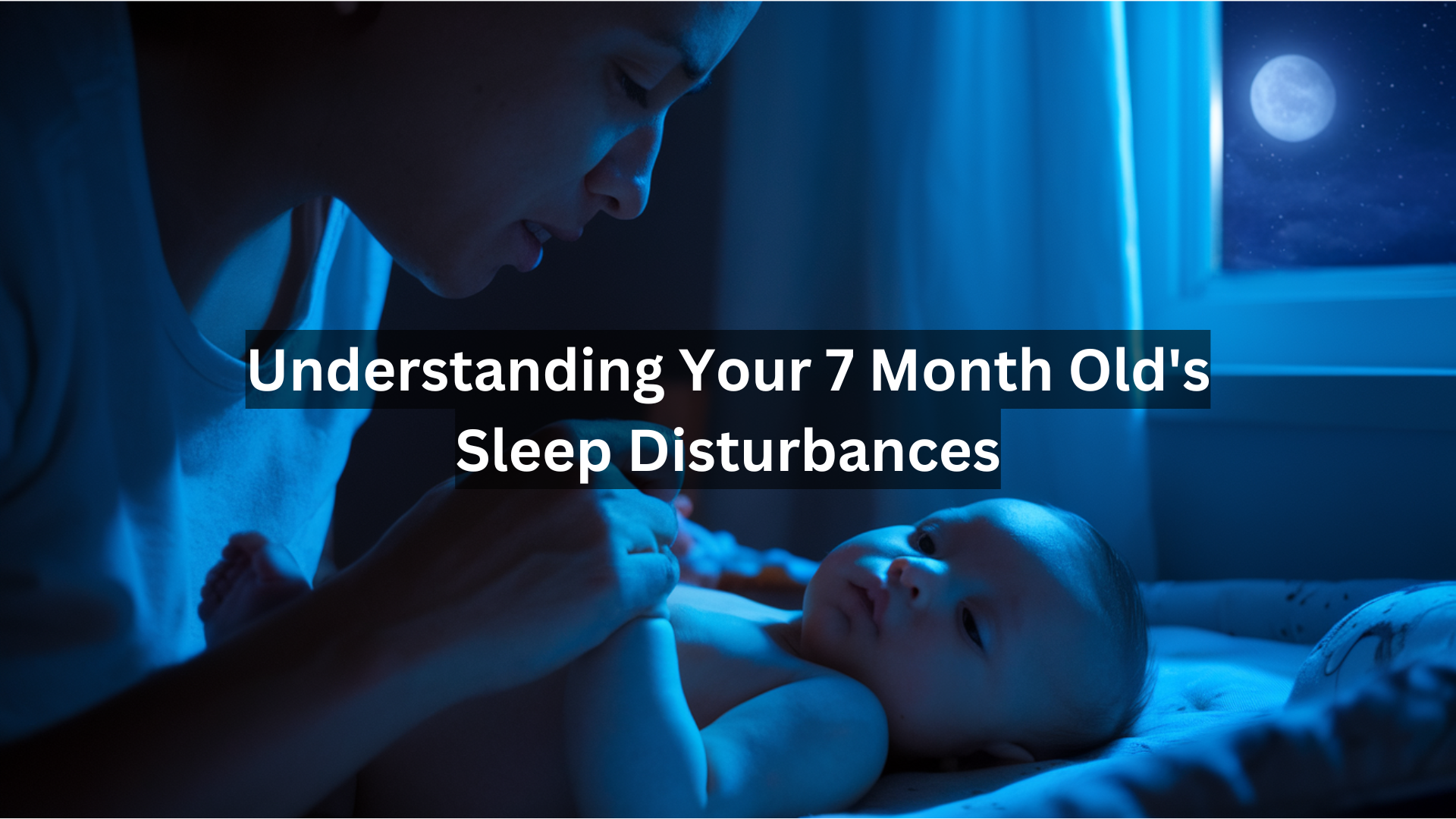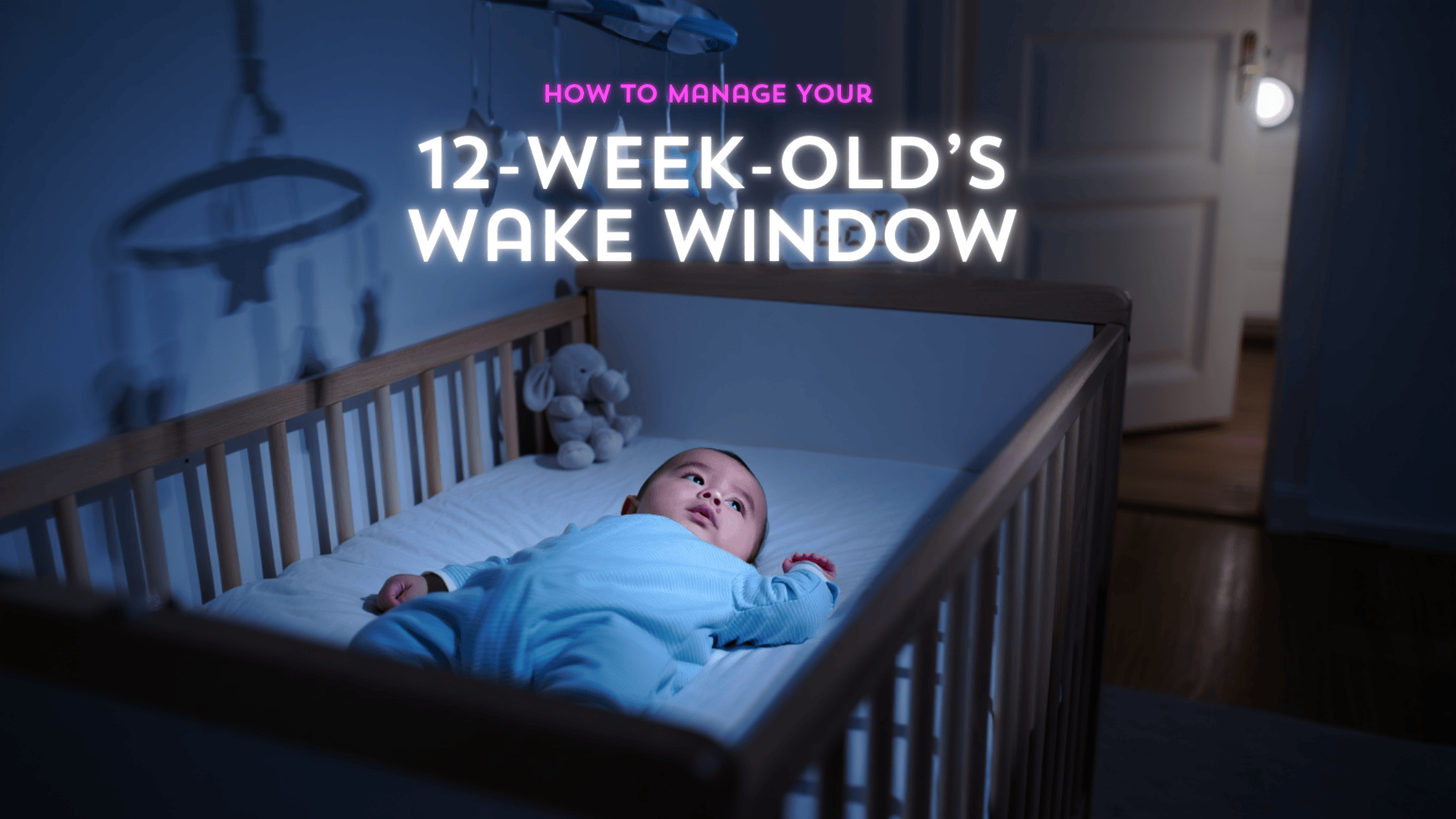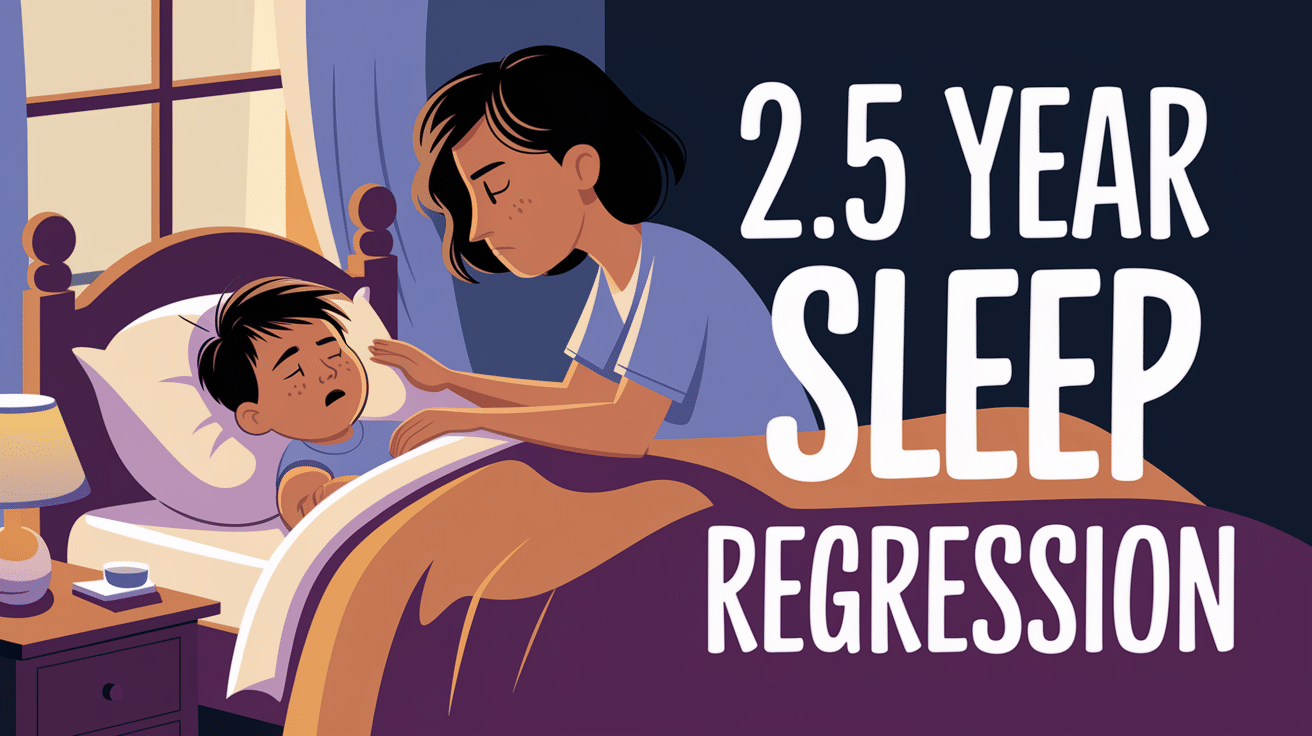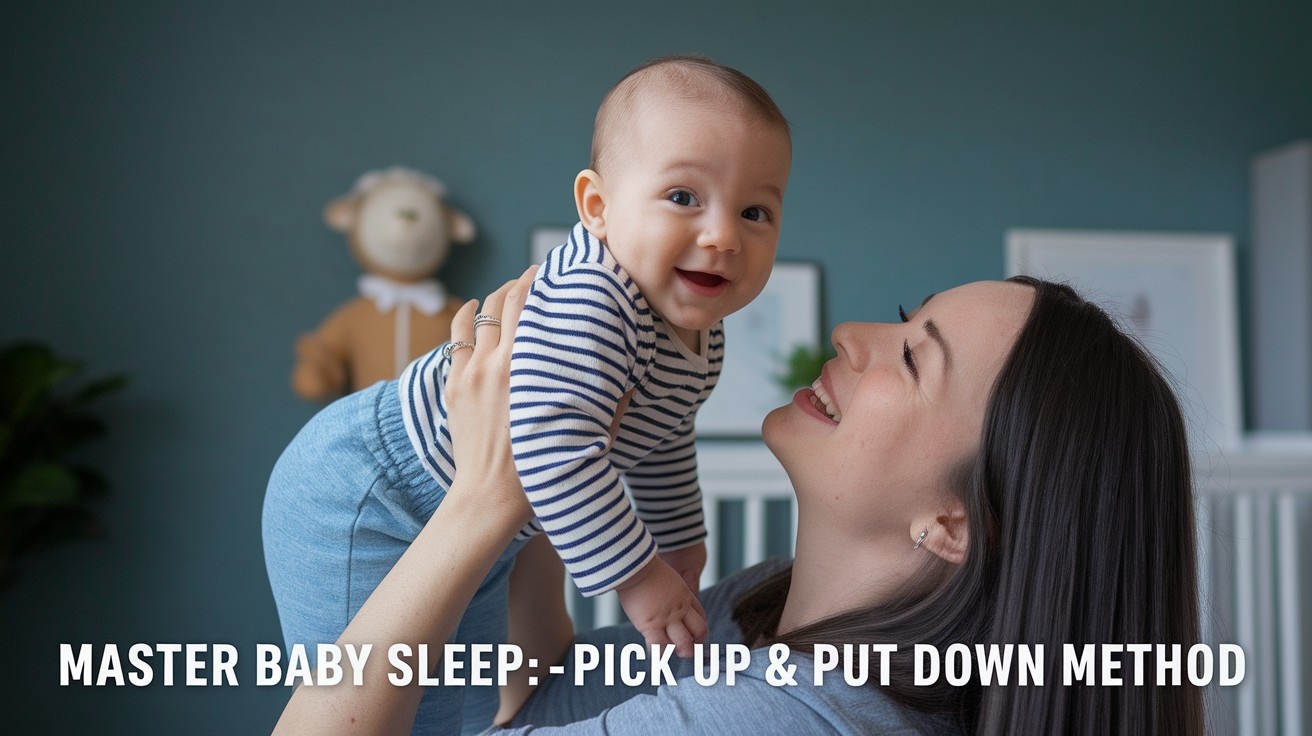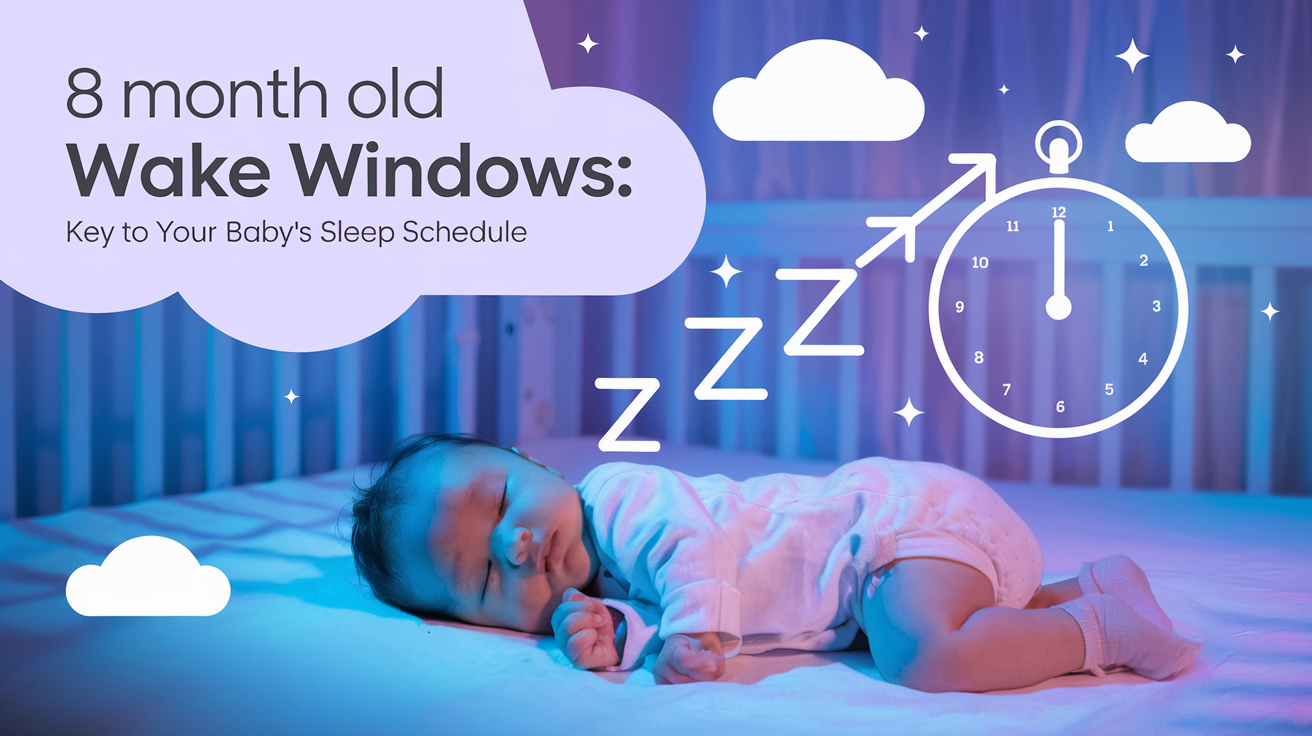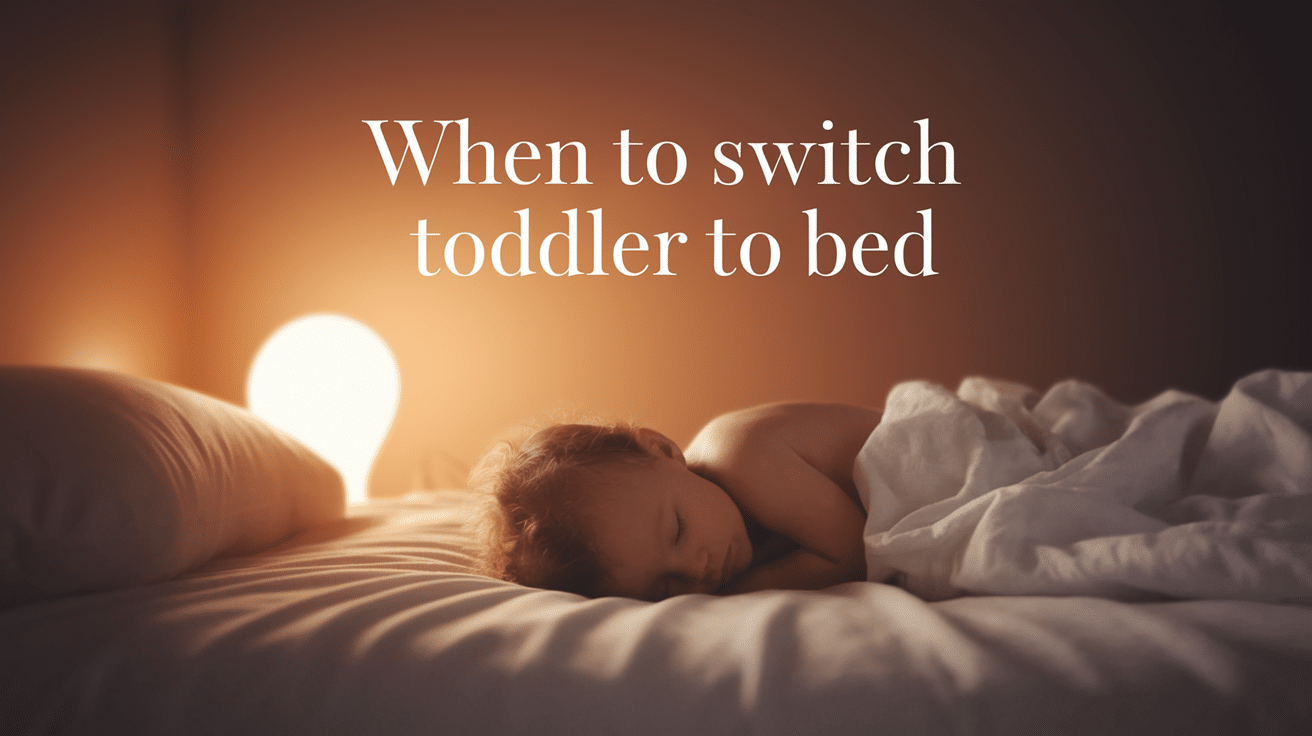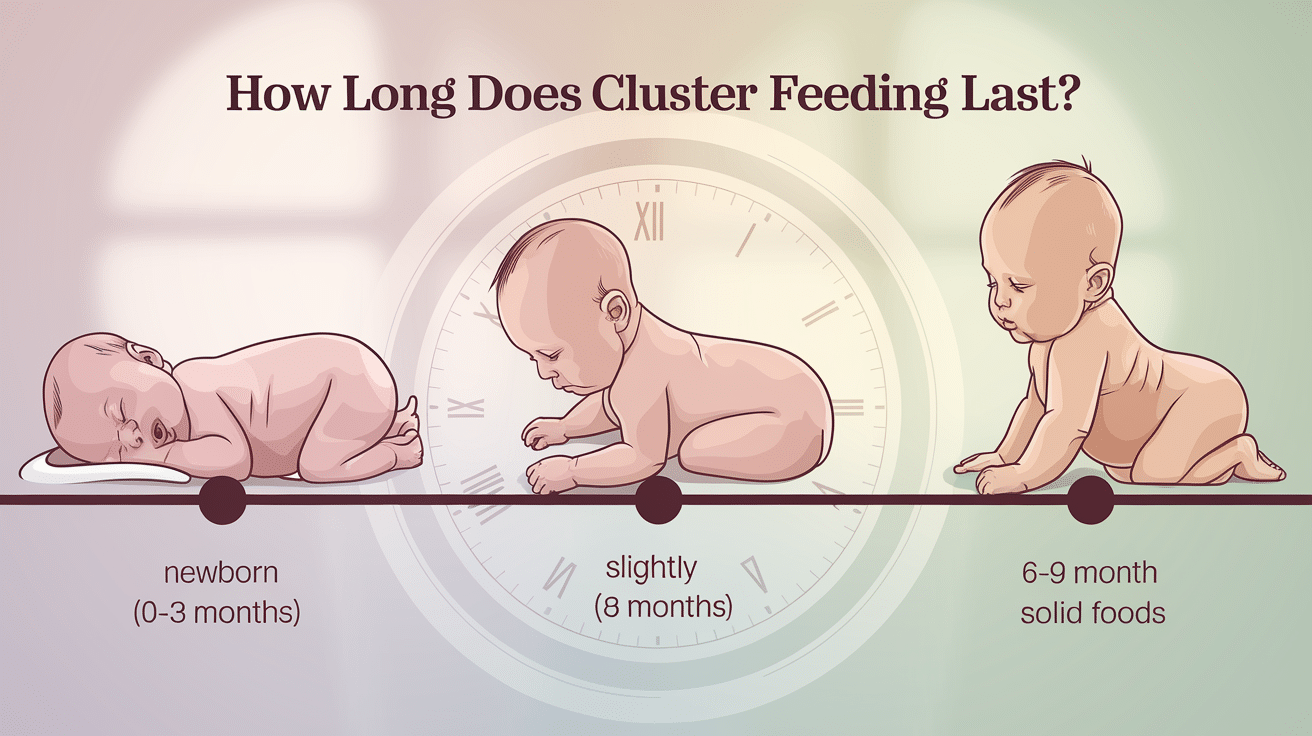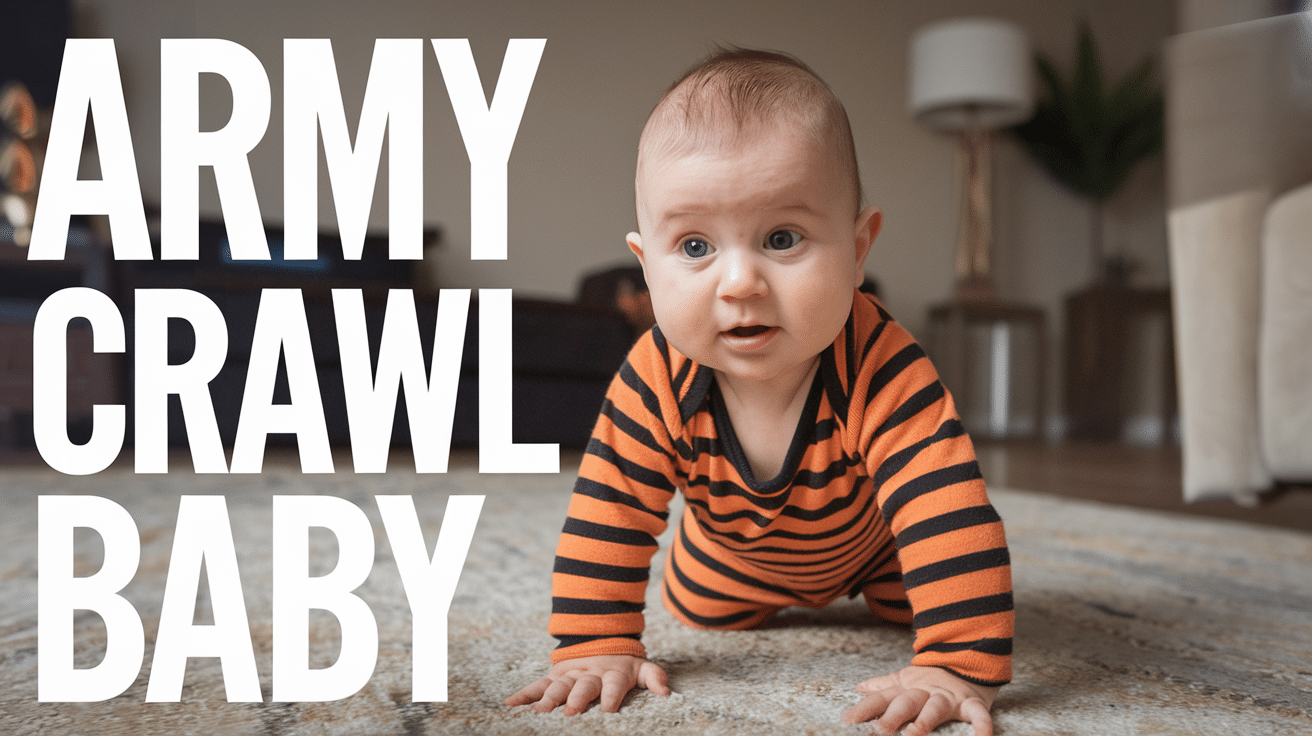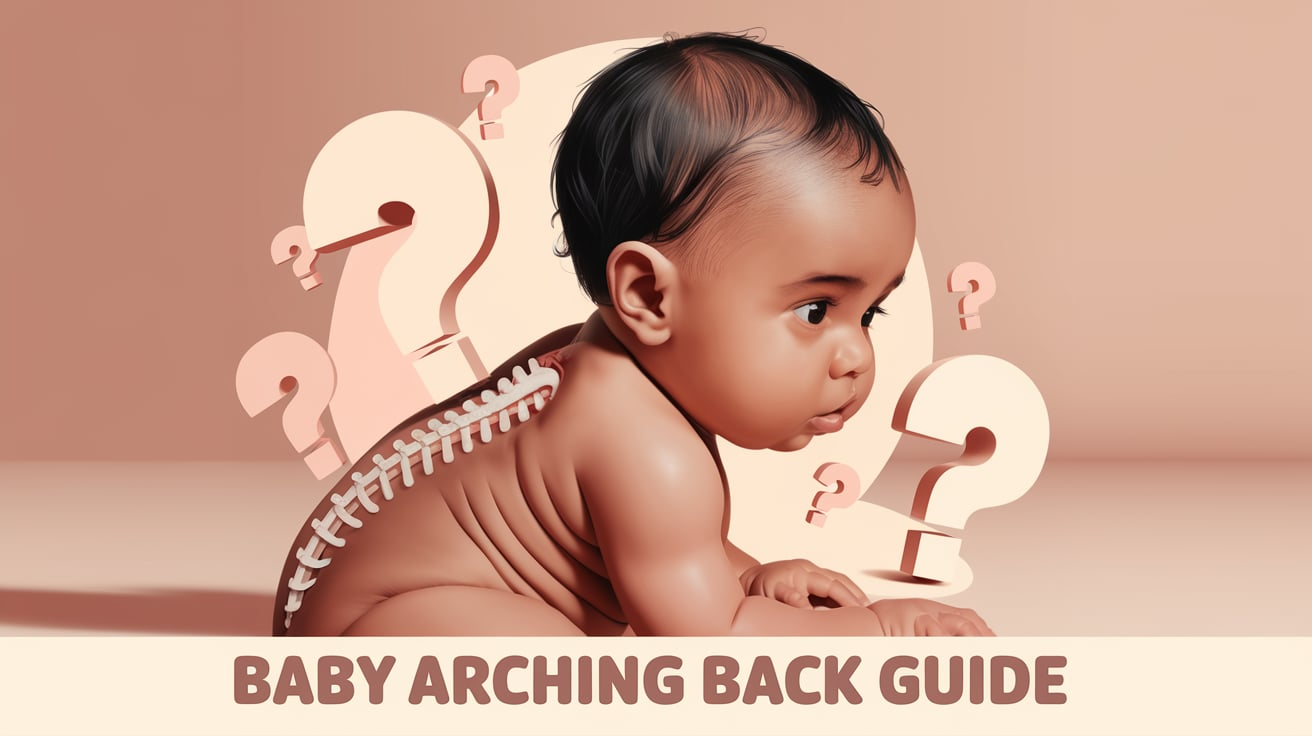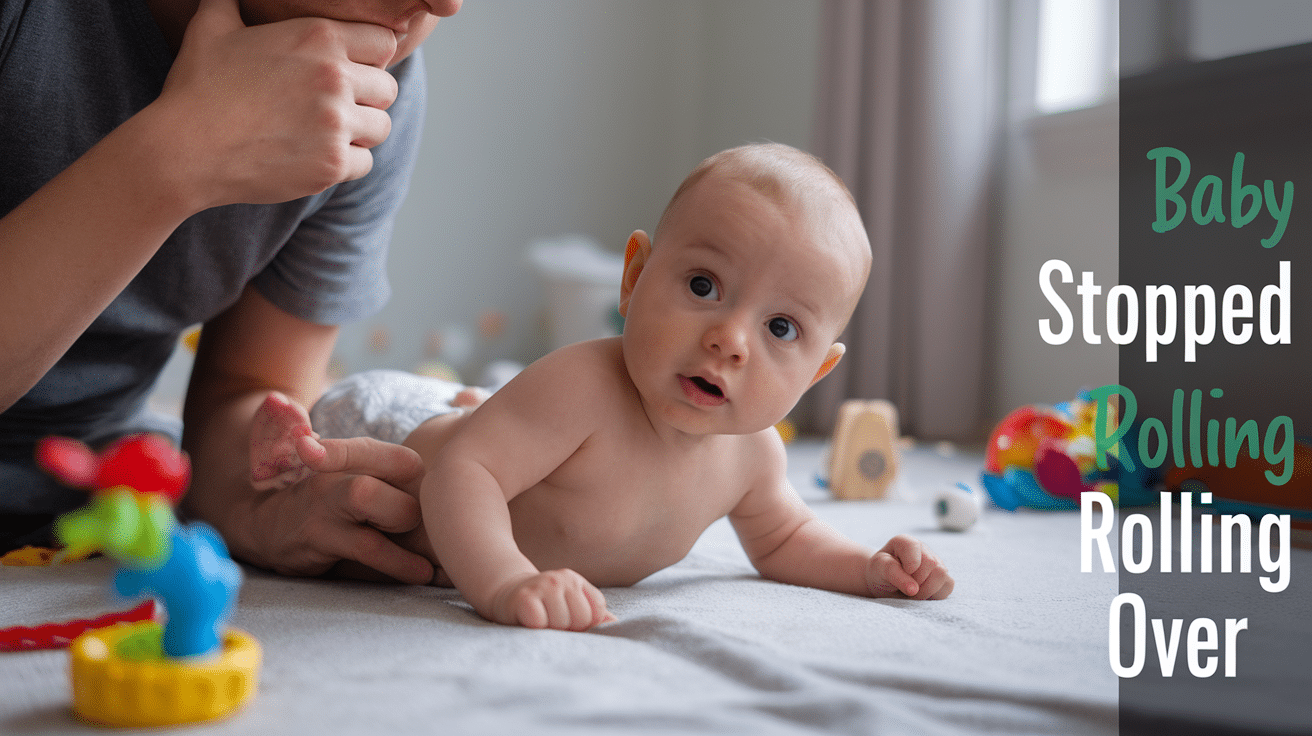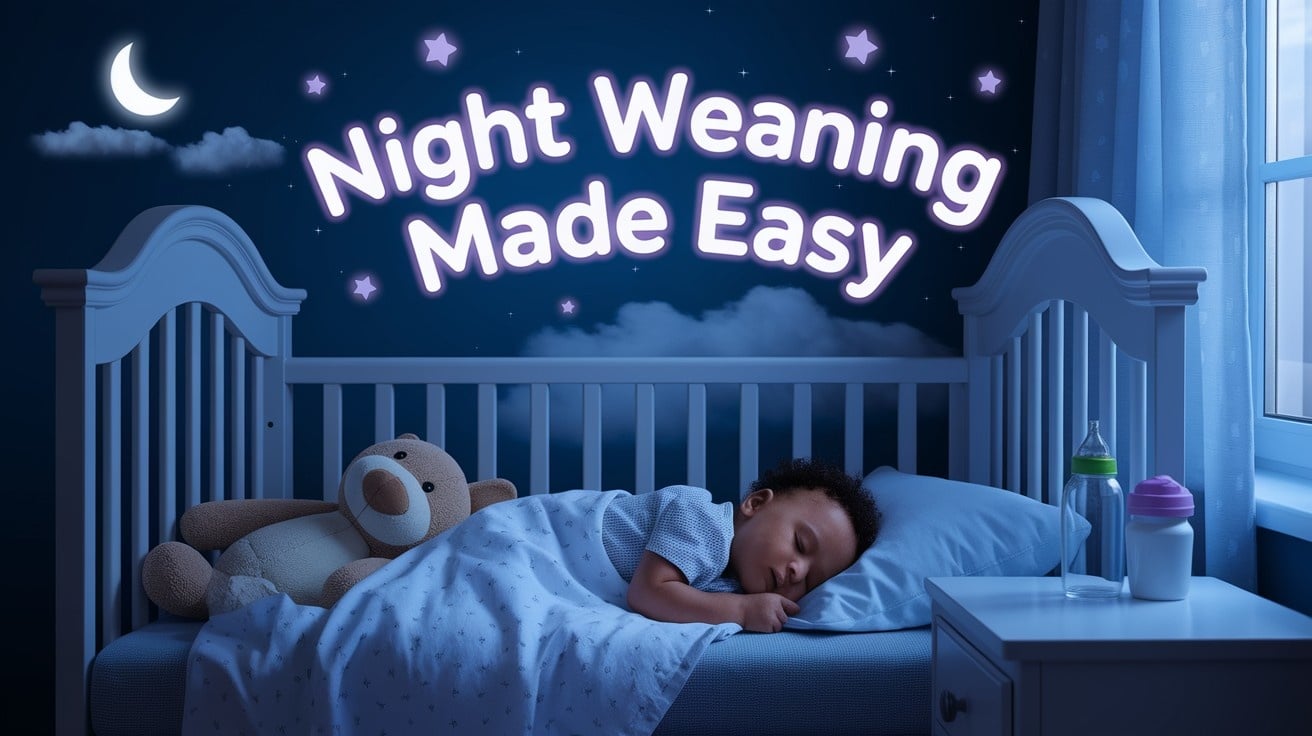
Helping your baby transition away from nighttime bottles is a key milestone in their growth. Many parents wonder exactly how to wean baby off bottle at night while minimizing tears and lost sleep.
This process marks an important step in your child’s eating development and dental health. Bottles during sleep can lead to tooth decay and may delay the growth of healthy daytime eating habits.
While the transition might bring a few difficult nights, remember that consistency and patience are your best tools. Every baby responds differently, so finding an approach that works for your family is essential.
Were you aware that babies typically have the physical ability to sleep through the night without feeding around 6 months of age? However, many continue to wake from habit rather than hunger.
The gradual steps we’ll outline help make this change smoother for both you and your little one.
Why Night Weaning Matters?
Night weaning can significantly impact your child’s dental health by reducing the risk of tooth decay from prolonged milk exposure during sleep. When babies feed throughout the night, milk pools in their mouth, potentially damaging developing teeth.
Breaking the night feeding cycle helps establish healthier sleep patterns for the entire family. Parents gain much-needed rest while babies learn to sleep for longer stretches without interruption.
As children reduce nighttime feedings, they often show increased interest in daytime meals. This shift supports better nutrition and helps establish regular eating routines.
Night weaning also encourages children to develop self-soothing techniques. When they wake and return to sleep without feeding, they build confidence in their ability to self-regulate.
The process requires patience but offers lasting benefits for physical health, sleep quality, and family well-being.
When Is the Right Time to Wean Baby Off the Bottle at Night?
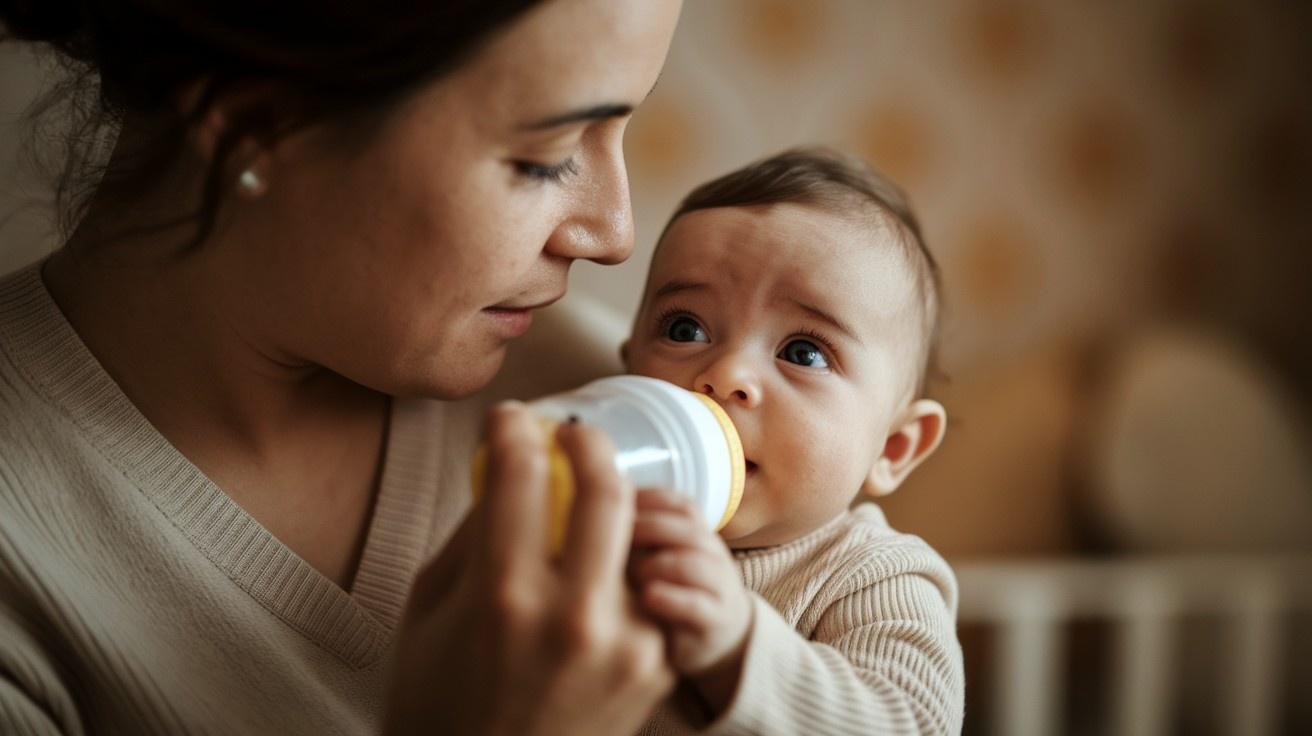
Most pediatricians recommend transitioning away from nighttime bottles between 12 and 18 months of age. This timing balances nutritional needs with dental health.
1. Age Guidelines and Pediatrician Recommendations
The American Academy of Pediatrics suggests phasing out bottles entirely by 18 months. Many doctors recommend starting the weaning process around 12 months, when most babies can drink from cups.
This timeline prevents tooth decay that can occur when milk sits on teeth overnight. Some babies may be ready earlier, while others might need more time to adjust.
2. Signs Your Baby Might Be Ready
Look for decreased interest in the nighttime bottle or a failure to finish the milk. Notice if your baby is eating more solid foods and relying less on milk for nutrition.
Watch for improved self-soothing skills and the ability to fall asleep without the bottle. Observe if your child can drink effectively from a sippy cup during the day. Some babies will start pushing the bottle away or turning their heads.
3. How Developmental Milestones Affect Readiness
Babies who can self-soothe tend to adapt better to nighttime weaning, and children with stronger language skills can better understand simple explanations about the change.
Motor development plays a role as babies who can hold cups are physically ready for transition. Emotional security matters—babies with strong attachment may handle the change with less stress. Cognitive development helps children understand new routines and expectations.
How to Wean Baby Off Bottle at Night: Step-by-Step Guide

Breaking the nighttime bottle habit can be challenging but is an important milestone for your baby’s development. With patience and consistency, you can help your little one transition to healthier sleep habits while maintaining a strong bond.
Step 1: Gradually Reduce Bottle Volume
Begin by cutting back the amount of milk in the nighttime bottle by 1-2 ounces every few days. This small change is less noticeable to babies than removing the bottle completely. Continue this reduction until you reach about 2 ounces total.
Step 2: Introduce a Comfort Item
Add a special stuffed animal or soft blanket to which your baby can form an attachment instead of the bottle. Create a consistent routine with calming activities like reading books, gentle rocking, or soft singing to signal sleep time.
Step 3: Offer Water Instead of Milk
Once you’ve reduced the milk volume, try switching to plain water in the bottle. This maintains the comfort of sucking while removing the nutritional reward that keeps babies waking for feedings.
Step 4: Shift Calories to Daytime Feeds
Make daytime meals more substantial to ensure your baby isn’t hungry at night. Consider adding an extra feeding 30 minutes before bedtime to fill their tummy.
Step 5: Use Verbal Reassurance and Gentle Sleep Training
When your baby fusses, use a calm, reassuring voice without picking them up immediately. Brief check-ins can help your baby learn to self-soothe while knowing you’re still nearby.
Different Techniques to Wean Off a Bottle at Night

1. The Gradual Dilution Technique
Start by mixing formula or milk with 25% water in week one. Increase to 50% water in week two, making the bottle less appealing. By week three, offer a 75% water mixture while introducing cup drinking at mealtimes.
This gentle approach works well for children who are particularly attached to their bottles. Most toddlers naturally lose interest as the taste becomes less satisfying.
Always maintain proper nutrition by ensuring nutrients come from solid foods during this transition.
2. The Gradual Reduction Method
Begin by eliminating the least important bottle feeding, typically mid-day. Reduce the amount in remaining bottles by 1-2 ounces each week while offering water or milk in a cup afterward.
For night feedings, gradually decrease ounces while extending bedtime routines with more stories or songs. This method works well for children who are quantity-focused rather than comfort-seeking.
Many parents find success in replacing the bottle with a special cup used only at meal times. Be consistent with the reduction schedule even when facing resistance.
3. The Cold Turkey Approach
This method works best for adaptable children who handle transitions well. Prepare by introducing cups weeks before completely removing bottles.
Choose a significant milestone, like a birthday or the first day of preschool, as the “no more bottles” day. Replace bottle time with new routines involving comfort objects like stuffed animals or blankets.
Expect some protests, but remain consistent and calm during the adjustment period. When parents maintain a united approach, most children adapt within 3-7 days.
Tips to Make Night Weaning Easier
Helping your baby transition away from nighttime feedings can be challenging. With patience and the right approach, you can make this process smoother for both of you.
Stick to a steady bedtime routine that signals sleep time to your child. This might include a bath, story, and gentle lullaby.
Keep nighttime interactions minimal and calm. Use hushed tones and dim lighting to maintain the sleep environment. Give extra physical comfort during this change. Gentle back rubs or holding can provide reassurance without feeding.
Focus on filling daytime meals with nutrient-dense foods. When babies eat well during the day, they’re less likely to wake hungry at night.
Additional Tip: Offer a favorite stuffed toy or blanket as a consistent sleep companion to help soothe your baby without the bottle.
Night Bottle Weaning: Common Mistakes to Avoid
Transitioning away from night bottles requires patience and planning. Many parents make the error of stopping suddenly without proper preparation, which often leads to difficult nights for both the baby and the parents.
Another common mistake is substituting the bottle with a different sleep habit. This merely shifts dependency rather than addressing the root issue.
When progress gets tough, staying consistent matters most. Giving in during challenging nights can reset your efforts and confuse your child about expectations.
Pay attention to daytime eating patterns. Nighttime feeding habits connect closely with daytime nutrition intake. If your baby isn’t getting enough calories during the day, they may truly need those night feedings.
By understanding these pitfalls, you can create a more effective and gentle weaning plan that works for your family. The most common mistake is trying to eliminate night bottles abruptly without a gradual weaning plan.
What to Expect: Baby’s Reactions and Adjustments

Babies often show distress when adapting to new routines. This may include frequent crying and irregular sleep patterns. Most infants take about 2-4 weeks to start settling into predictable patterns. Every baby adapts at their own pace, so patience is key.
Parents can look for small improvements rather than overnight changes. They can notice when crying spells become shorter or when night-wakings decrease slightly.
Positive signs include longer sleep stretches, calmer awake periods, and better feeding sessions. These small wins indicate your baby is slowly adjusting.
Remember that setbacks are normal during this transition phase. Your consistent responses help your baby feel secure, even when uncomfortable.
The adjustment period is temporary, though it may feel endless during difficult moments. Your loving care creates the foundation for your baby’s growing sense of security.
When to Talk to a Pediatrician?

Parents often wonder when to contact their child’s doctor. Trust your instincts—you know your baby best.
If your baby struggles with adjustment after several weeks at home, it may signal that something needs attention. New parents can tell when something isn’t right.
Weight gain concerns warrant medical assessment. Babies should follow their growth curve, and deviations might indicate feeding issues that need professional evaluation.
Sleep changes beyond normal patterns might point to underlying problems. What seems like typical tiredness could be something more serious.
Medical issues sometimes hide behind common symptoms. Persistent fussiness, unusual crying, or feeding difficulties might require expert eyes.
Remember: Pediatricians want to help. They’d rather you call with concerns than wait until small problems grow bigger. Your child’s health is their priority.
Final Words
Moving away from nighttime bottles takes time. Babies form strong attachments to their feeding routines, making sudden changes difficult.
Every child adapts at their own pace. What works quickly for one baby might take weeks for another, so comparing progress isn’t helpful. Staying steady with your approach yields the best results.
Remember to care for yourself during this transition period. With these tips on how to wean baby off bottle at night, you’re ready to help your little one reach this milestone.
Trust your instincts, and remember that small steps forward still count as progress.
If you’re interested in more informational content on mothers and babies, feel free to click here and explore other blogs that you might enjoy.










